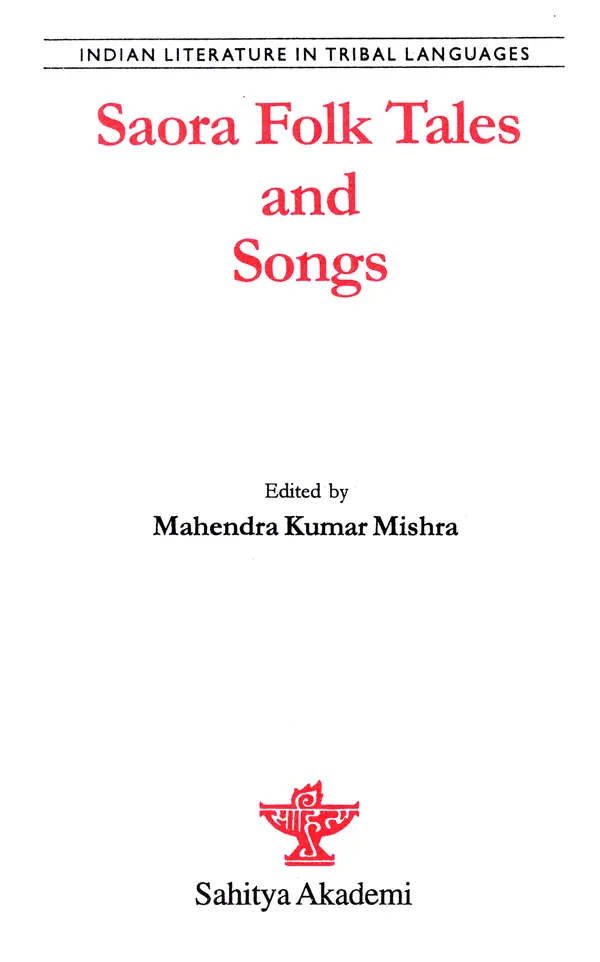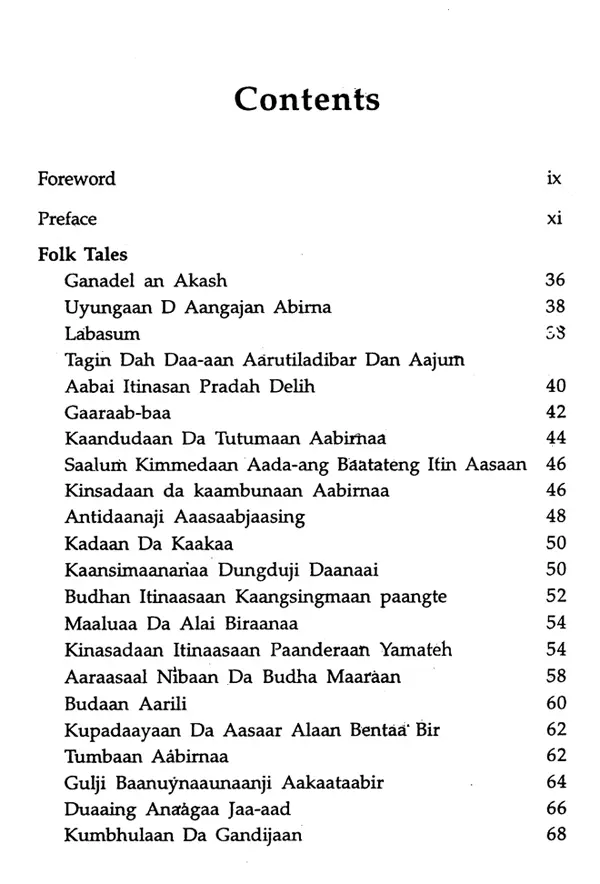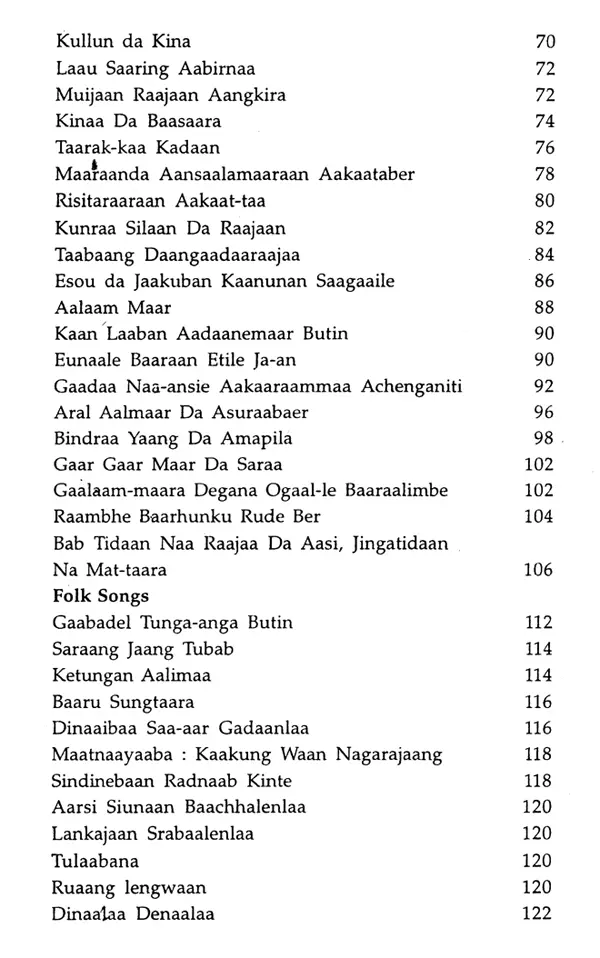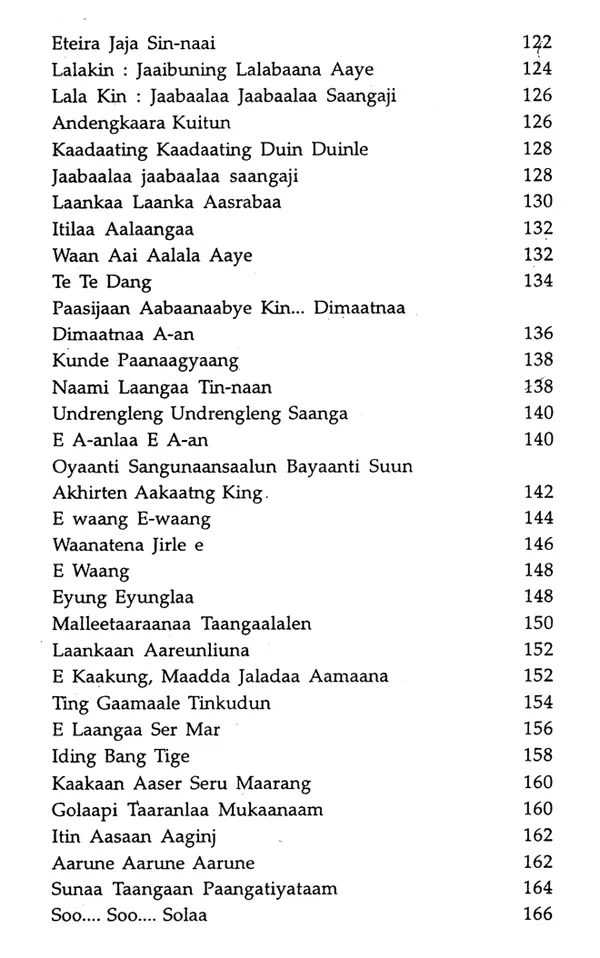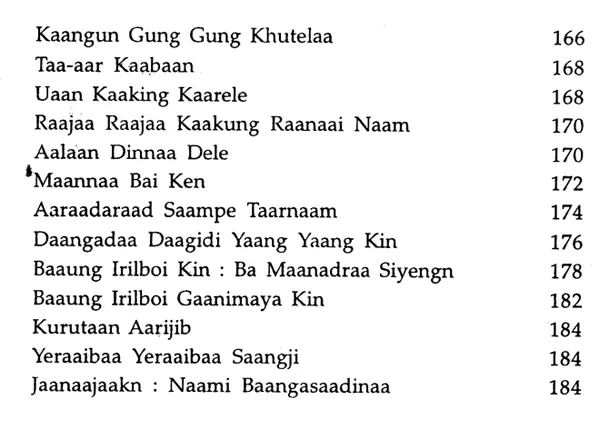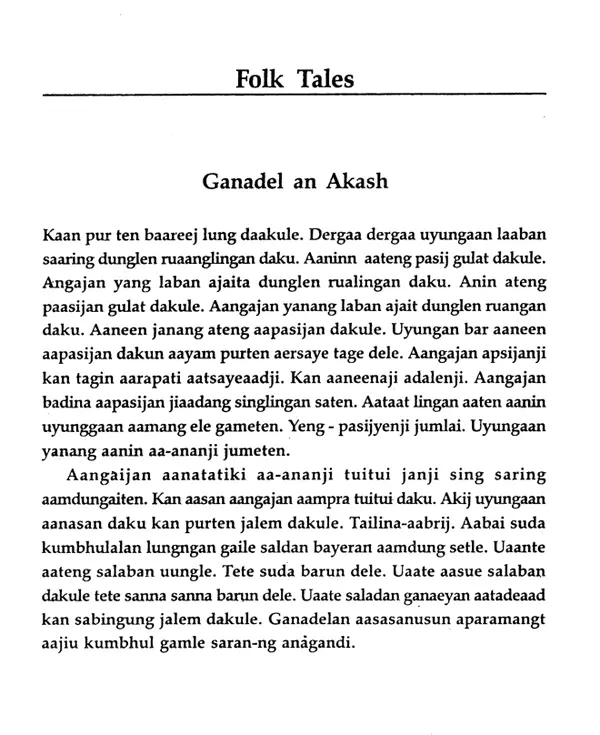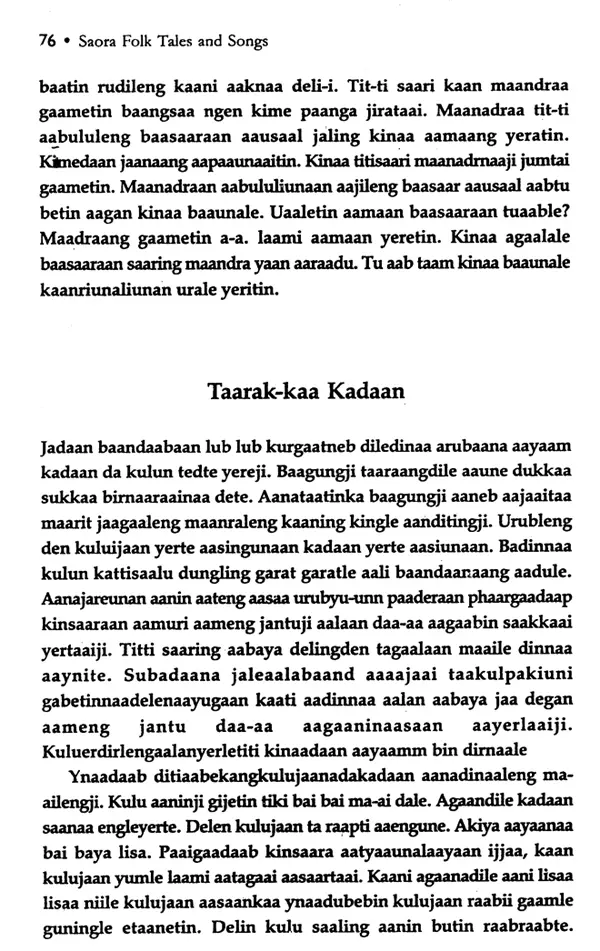
Saora Folk Tales and Songs
Book Specification
| Item Code: | UAM168 |
| Author: | Mahendra Kumar Mishra |
| Publisher: | SAHITYA AKADEMI, DELHI |
| Language: | English |
| Edition: | 2017 |
| ISBN: | 9788126021383 |
| Pages: | 187 |
| Cover: | PAPERBACK |
| Other Details | 8.50 X 5.50 inch |
| Weight | 260 gm |
Book Description
The Saoras are the oldest tribe in Orissa and an important cultural component of the state. Lord Jagannath, the most widely worshipped deity of Orissa, was once worshipped by the Saoras. Viswavasu, the first worshipper of Lord Neelamadhava, was the originator of Lord jagannatha. The following legend of Vidyapati Lalita is a well-known narrative in the folklore of Orissa:
King Indradyumna of Avanti had a dream that Lord Neelamadhava was interested in being worshipped by him. So he sent Vidyapati, the brahmin messenger to the region of Viswavasu, the first worshipper of Lord Neelamadhava. Vidyapati tried his best to look for this god but could not find him. In course of time he fell in love with Lalita, the only daughter of Viswavasu. She assured Vidyapati that she would show him Lord Neelamadhava when her father was away. This done, Vidyapati stole the vigraha( a blue sapphire in which the God was carved) and left the Saora region. He offered the image of Neelamadhava to King Indradyumna and installed it in the temple of Puri renamed as Lord Jagannath.
Indian literature is marked by its immense variety of styles and forms and the rich interchange of language traditions that form its complex fabric. The distinction between the classical or elite and the oral or folk styles of composition has not been as sharp in India as elsewhere, though of course such a distinction is bound to arise wherever writing is used as a means of literary communication. Similarly, literary traditions in India have not evolved exclusively along the lines of development of one and the only standardised variety of any of our languages. Rather, they have developed through an active interchange between regional varieties and standard forms. As such, no acquaintance with literature in any Indian language will be adequate unless an acquaintance with literary compositions in related dialects too is made. Again, the linguistic complexity of our social situation is such that it is often impossible to decide whether a certain speech style forms the dialect of a given literary language, or if it is an entirely independent but related language itself. Most of the speech varieties forming the basis of the culture of tribal communities in India are of this nature. Of course, the exceptions to this general observation too are large in number; and there indeed are many languages spoken by tribals that are clearly independent languages.
**Contents and Sample Pages**
